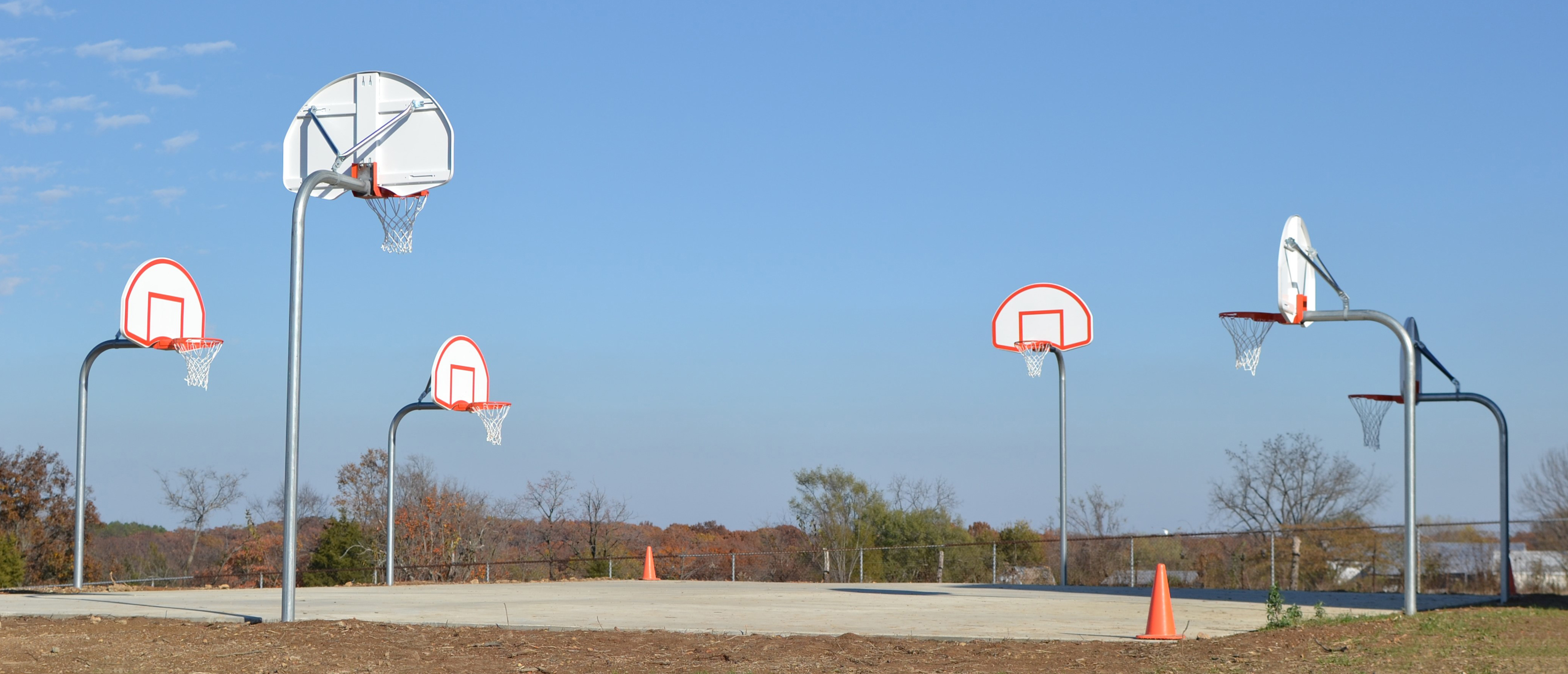If you’re in the market to purchase an outdoor basketball post such as a gooseneck or straight post, you may be confused by all the technical terms used to describe the equipment. Don’t worry, we’ve got you covered! We’ll break down some of the common phrases used by equipment manufacturers and explain how knowing these terms will help you choose the perfect post for your outdoor court!
Gooseneck/Adjustable Straight Posts
Gooseneck posts are fixed height round steel posts bent into the shape of a goose neck, and are the most common outdoor basketball post style. Adjustable straight posts are comprised of two parts - a straight vertical round steel post, and an attached horizontal extension arm that can be adjusted up or down to accommodate players of all ages and abilities.
Safe Play Area
A post’s safe play area is the distance between the front of the vertical post and the backboard and is also known as the extension length of the post. A larger safe play area is always more desirable so that players are less likely to come in contact with the post during play. Today, common extension lengths in the marketplace are 3’, 4’, 5’, and 6’. It is recommended that you purchase a post with the largest safe play area possible that will fit within your court space. If your court dimensions require a post with a shorter safe play area, 2- to 4-inch-thick padding is recommended to cover the post to reduce chance of injury.
Direct Goal Attachment
A direct goal attachment occurs when the post, backboard, and goal are all connected together at the same location. This attachment method allows the load and force of the player to be transferred directly to the post if a player dunks or hangs on the rim. On the other hand, if a rim is connected to the bottom of the board and the backstop is connected to the middle of the board, the load is transferred directly to the backboard when a player dunks, which increases the risk of premature damage or breakage of the board.
Outside Diameter (O.D.)
Manufacturers typically offer several outdoor posts sizes to accommodate a range of applications and budgets, with each being noted by its outside diameter (often abbreviated to O.D.). The outside diameter of a post is the measurement of the post end from side to the other (or twice the radius). However, it can be difficult to measure the O.D. of a post when it’s buried inground and with a backboard attached to the end. One solution is to measure the length of a flexible measuring tape wrapped once around the post. Take that number (the post circumference) and divide by 3.14 and you will get your post outside diameter. Common post O.D.s are 3-1/2”, 4-1/2”, 5-9/16”, and 6-5/8”. Keep in mind that smaller post O.D.s will have smaller safe play areas (see above) and bigger posts will be better suited to withstand heavy play settings.
Wall Thickness
The wall thickness of a steel post is simply the thickness of the steel material of the post wall. The difference between the outside diameter (O.D.) of a post and its inside diameter (I.D.) is the wall thickness.
Schedule 40 Pipe
Pipe schedules are used to describe pipe wall thickness, with a higher schedule number meaning a higher pipe wall thickness. Most pipe schedules go from Schedule 40 up to Schedule 160, with Schedule 40 being the most commonly used for outdoor basketball systems due to its versatility and all-around strength.

